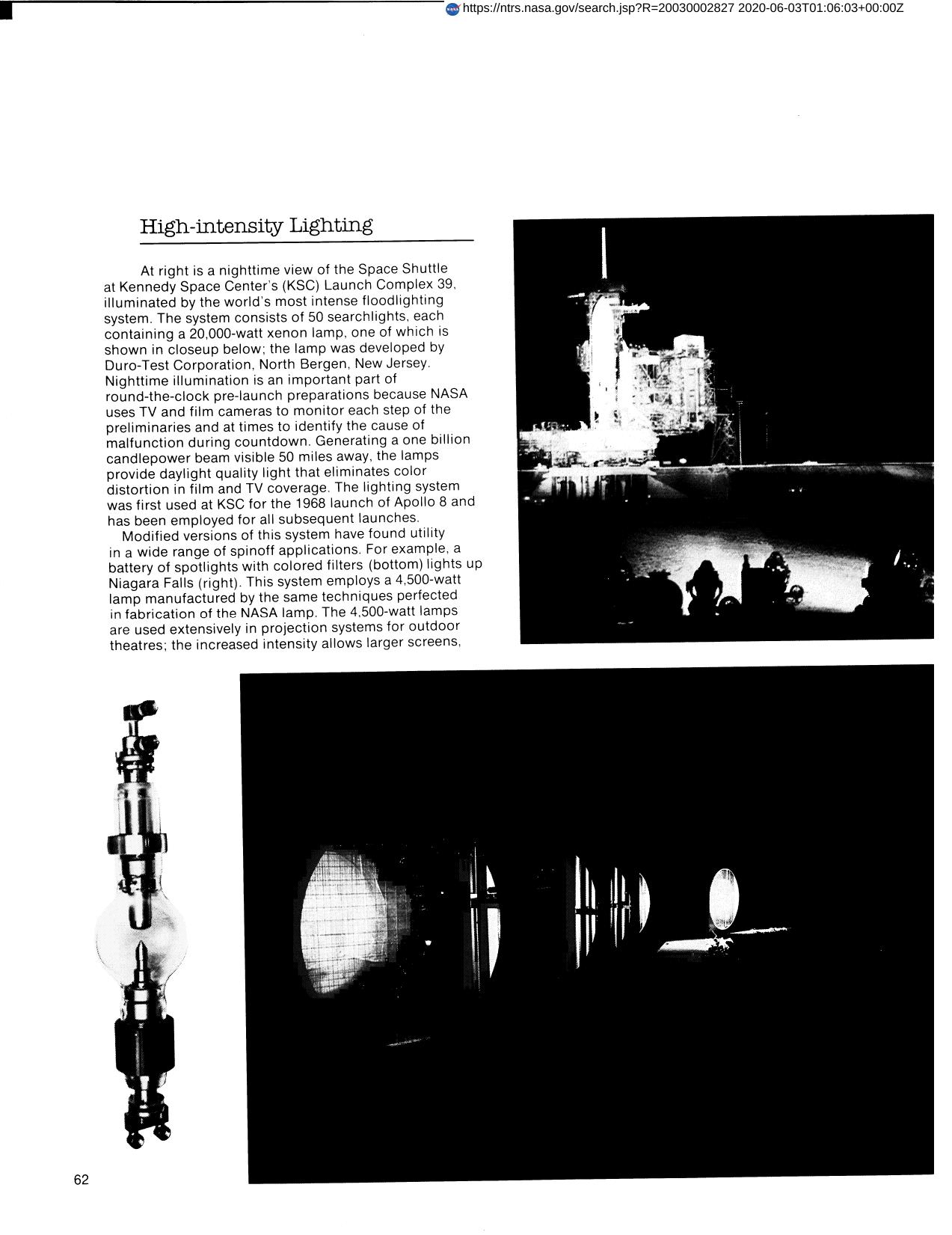
High Intensity Lighting
Nighttime illumination is an important part of round-the-clock pre-launch preparations because NASA uses TV and film cameras to monitor each step of the preliminaries and at times to identify the cause of malfunction during countdown. Generating a one billion candlepower beam visible 50 miles away, the lamps developed by Duro-Test Corporation provide daylight quality light that eliminates color distortion in film and TV coverage. The lighting system was first used at Kennedy Space Center in 1968 for the launch of Apollo 8. Modified versions are available in wide range of applications, such as the battery of spotlights with colored filters that light up Niagara Falls, as well as the lamps used in the projectors for the Smithsonian's IMAX Theatre, indoor theatres with supersized screens and outdoor projection systems.
Full article: http://hdl.handle.net/hdl:2060/20030002827

High Intensity Lighting

High Intensity Lighting













